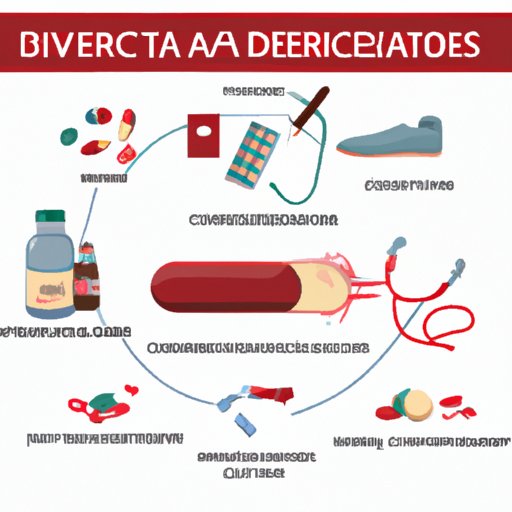
Understanding Peripheral Arterial Disease
Peripheral Arterial Disease (PAD) is a common circulatory disorder that affects millions of people worldwide. It is a condition caused by the narrowing of arteries that supply blood to the legs and feet. Though PAD can be painful and debilitating, it can go undiagnosed for years, resulting in severe complications like nonhealing wounds or amputation. In this article, we will discuss what PAD is, its symptoms, causes, and treatment options.
Symptoms, Causes, and Treatment Options
PAD is caused by a buildup of plaque in the arteries, known as atherosclerosis. This plaque buildup narrows the arteries, leading to reduced blood supply to the legs and feet. The symptoms of PAD depend on the severity of the disease. Mild cases may only cause cramps or pain in the legs during physical activity, while severe cases may result in nonhealing sores on the feet and toes, which could lead to amputation.
Several factors can contribute to the development of PAD, including smoking, high blood pressure, high cholesterol, diabetes, and a family history of heart disease. Treatment for PAD may involve lifestyle changes, medication, or surgery. Making lifestyle changes like quitting smoking, exercising, and eating a healthy diet can significantly reduce the risk of complications related to PAD. Medications like aspirin, cholesterol-lowering drugs, and drugs that improve blood flow may also be prescribed. Surgery is typically used as a last resort, and options include angioplasty, stenting, or bypass surgery.
A Common Form of Circulatory Disorder
PAD is quite common in the general population. It affects roughly 8.5 million people in the United States alone, with prevalence increasing with age. High-risk groups, such as smokers, people with diabetes or high blood pressure, and those with a family history of heart disease are more likely to have PAD.
PAD can also significantly impact a person’s longevity and quality of life. It is responsible for over 150,000 limb amputations annually in the United States alone. People with PAD have a higher risk of heart attack, stroke, and other complications related to poor blood flow.
The Silent Threat
PAD often goes unnoticed until it has progressed to a severe stage. Early signs and symptoms are mild and may be attributed to other conditions, like arthritis or muscle strain. As PAD progresses, however, symptoms become more severe, causing constant pain in the legs and feet. Early diagnosis of PAD is essential to avoid complications like amputations.
Doctors use several tools to diagnose PAD, such as physical examination, imaging tests, or blood tests. Screening for PAD is recommended for people who have risk factors such as smoking, diabetes, and people over fifty without a prior diagnosis. Continuous monitoring is also essential to keep tabs on the progression of the disease.
Living with Peripheral Arterial Disease
Living with PAD can be challenging, especially in later stages of the disease. Simple everyday activities like walking or climbing stairs can become difficult or unbearable. However, certain lifestyle adjustments and coping strategies can help people with PAD manage their symptoms and maintain their independence.
Regular exercise improves blood flow to the limbs and helps relieve symptoms of PAD. It also reduces the risk of other complications like heart disease and stroke. A healthy diet, including antioxidants, healthy fats, and fresh fruits and vegetables, can also improve blood flow by reducing inflammation. Stress management techniques, such as yoga, meditation, or deep breathing exercises, can also alleviate symptoms of PAD.
Assistive devices like canes, walkers, or compression stockings can help people with PAD maintain their independence and improve their mobility.
New Advancements in Treating PAD
Recent breakthroughs in medicine have led to new treatments for PAD, including stem cell therapy and drug-coated balloons. Stem cell therapy involves injecting cells into damaged tissues, promoting healing and regeneration. Drug-coated balloons use a special coating to deliver medications directly to the damaged artery, reducing the risk of complications like restenosis.
While these new treatments have shown promise, they are still relatively new, and their long-term safety and efficacy are unknown. They may also be costly and not widely available.
Conclusion
In conclusion, PAD is a common condition that affects millions of people worldwide. Though it can have severe consequences, early diagnosis and treatment can help people manage their symptoms and reduce complications. Making lifestyle changes like quitting smoking, exercising, and eating a healthy diet can contribute to better outcomes. In the end, there is hope for those living with PAD. Advances in medicine and technology continue to offer new treatments and possibilities for better health and quality of life.




